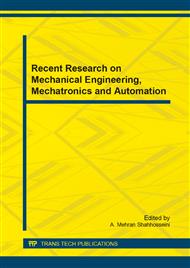p.615
p.621
p.628
p.633
p.639
p.646
p.651
p.661
p.665
Sea-Battlefield Situation Assessment Based on Improved Decision Tree
Abstract:
How to efficiently evaluate the dynamic changing sea-battlefield is the key of command decision. According to research sea-battlefield situation assessment based on improved decision tree algorithm based on derived attributes. First is based on the decision tree algorithm to establish the sea-battlefield situation assessment initial decision tree. Second are dynamically generated derivative branches set based on derived attributes. Once again, it can be grafting and pruning derivative branches to form the sea-battlefield situation assessment derived decision tree model. Finally, it may use a derived dynamically decision tree model assess sea-battlefield in different time slices.
Info:
Periodical:
Pages:
639-645
Citation:
Online since:
July 2014
Authors:
Price:
Сopyright:
© 2014 Trans Tech Publications Ltd. All Rights Reserved
Share:
Citation:


